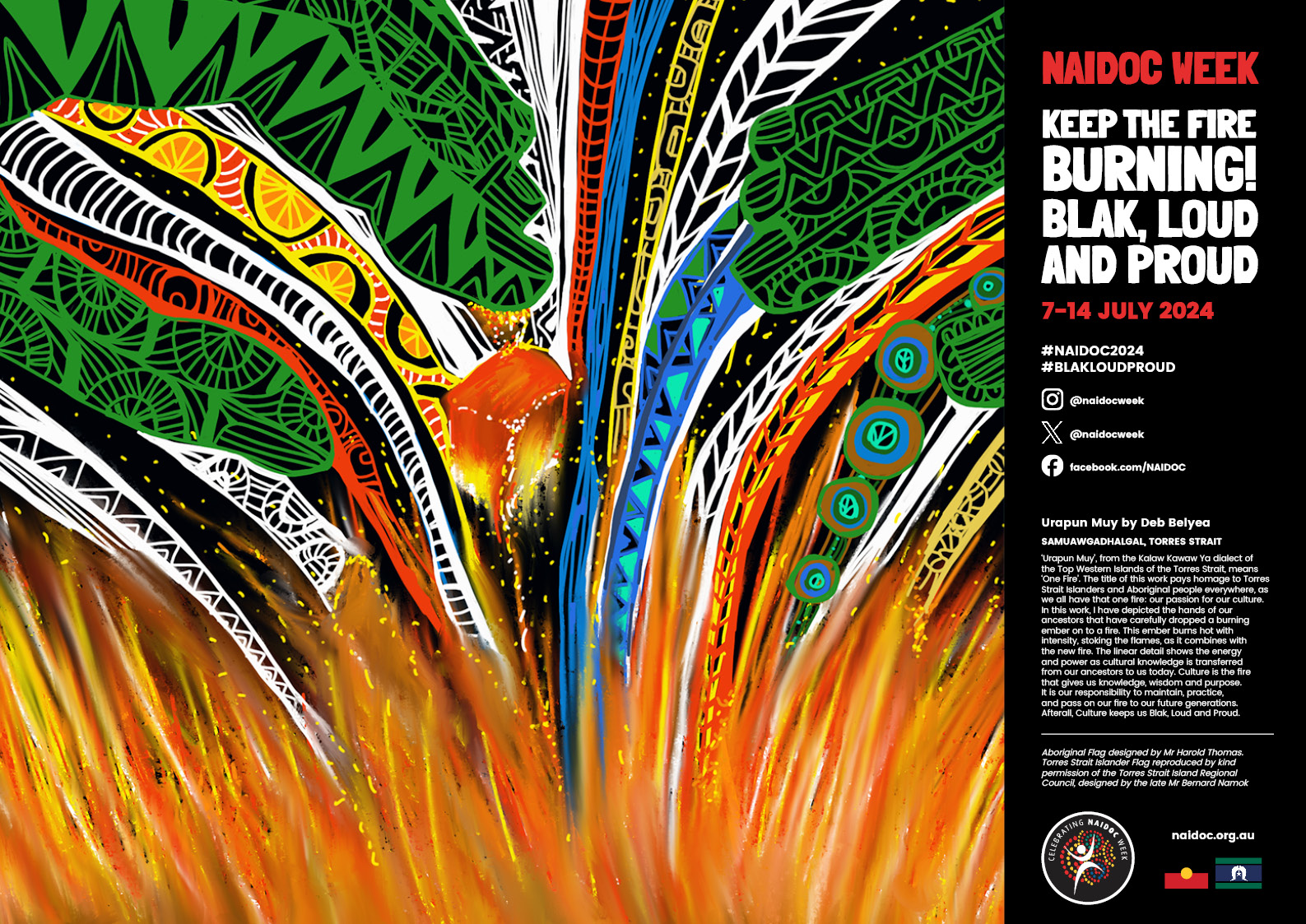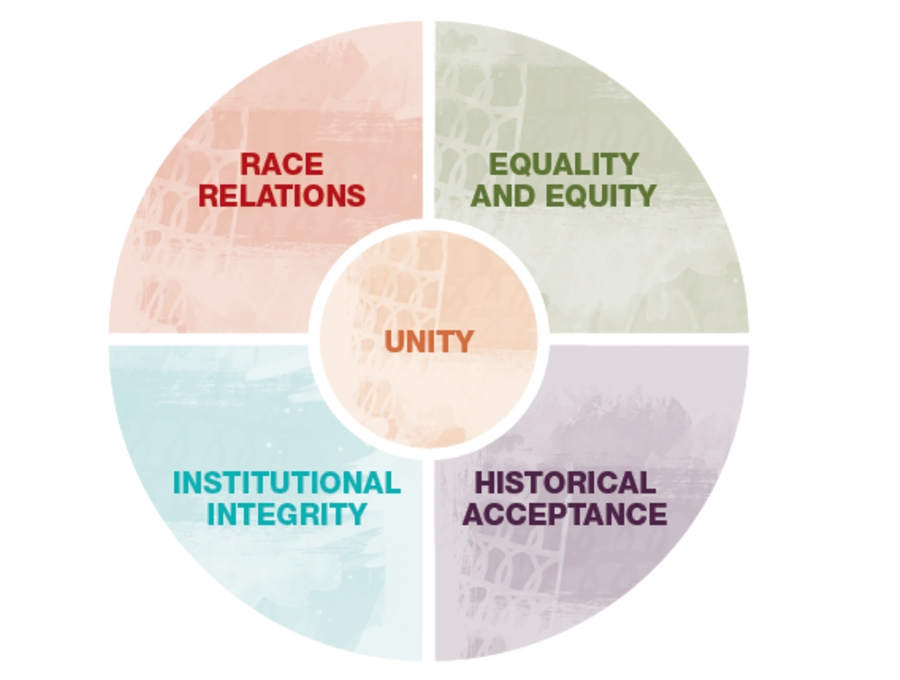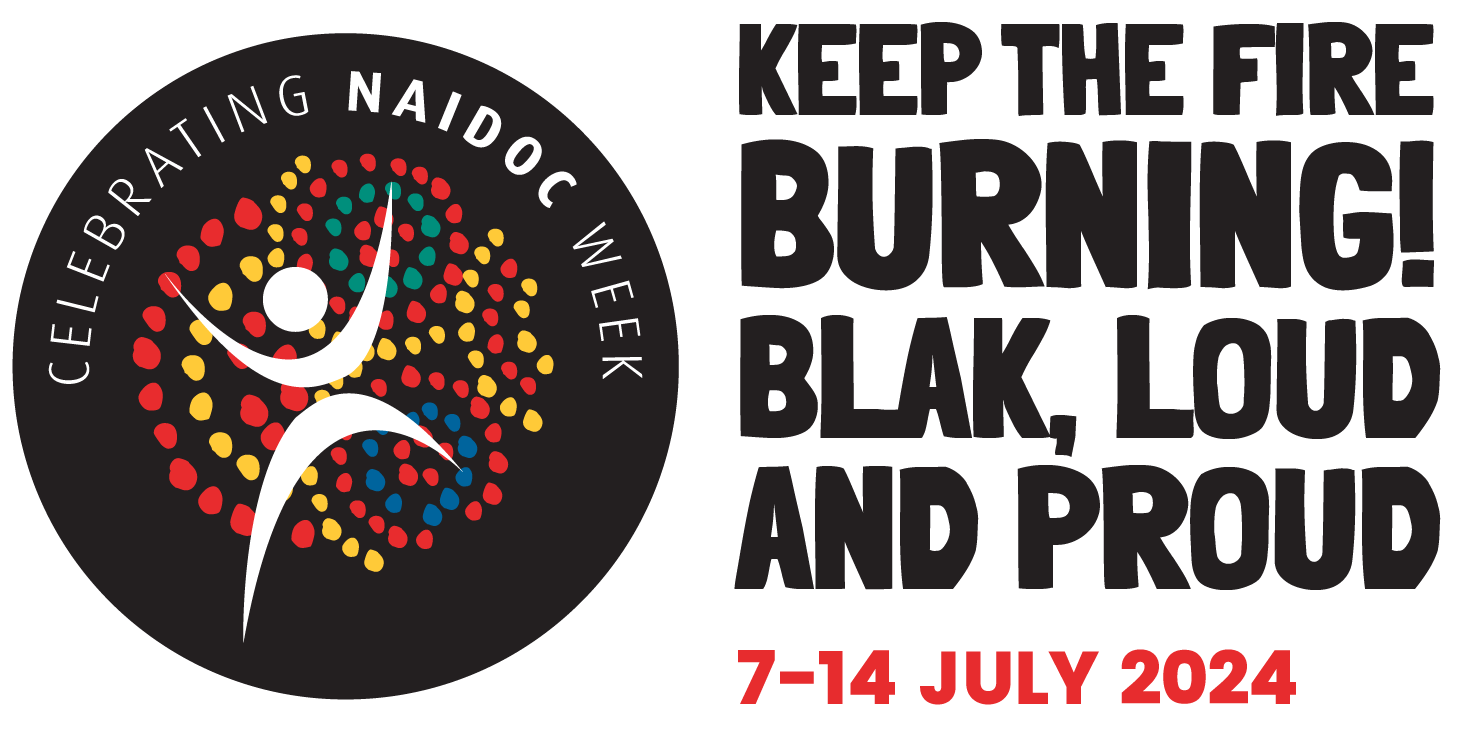

A Welcome to Country, or Acknowledgement of Country, is a ritual of respect.
Traditionally, this was a ceremony to invite or permit visitors from another area to enter or pass through. These ceremonies are now an important part of contemporary Australia and are performed at the beginning of many meetings or events. A variety of local rituals, song, or dance may also be involved.
A Welcome to Country may only be performed by the traditional custodians of the land upon which the event is occurring, or by those given permission to do so by the traditional owners.
An Acknowledgement of Country is a sign of respect that acknowledges the Aboriginal and Torres Strait Islander peoples as the traditional owners and custodians of the land, as well as their ancestors and traditions, and may be performed by Indigenous or non-Indigenous peoples.
Use these resources to take a closer look at these concepts, their differences, and the meaning behind them.
Welcome to Country - AIATSIS (This page includes video explanations, not just text)
Welcome to Country & Acknowledgement of Country - Creative Spirits
Welcome to Country or Acknowledgement of Country - indigenous.gov.au
As a school, Hutchins is committed to reconciliation, and has developed a Reconciliation Action Plan, appropriate Acknowledgement of Country to be used at school events and gatherings, and Vision for Reconciliation. These are made available on the Hutchins website.
The Hutchins School Acknowledgement of Country
We humbly and respectfully acknowledge the mouheneenner people of the South East Nation as the original custodians of the unceded kriwa lands on which this School stands; lands taken violently and without consent. We sadly acknowledge that none of the mouheneenner people are believed to have survived colonisation.
We acknowledge that these lands have been nurtured and protected by countless generations of Tasmanian Aboriginal people. The Hutchins School recognises and is deeply grateful for the continuing custodianship of their land.
We acknowledge the Tasmanian Aboriginal people and their Elders, past, present, and emerging, as well as First Nations people from other lands who may be here.
As a school, we commit to walking together with Tasmanian Aboriginal people to pursue healing through Voice, Treaty and Truth-Telling.
The Hutchins School Vision for Reconciliation
The Hutchins School is committed to active Reconciliation.
As an institution of open inquiry and learning, we commit to walk with and work together with members of the Tasmanian Aboriginal Community. As a school, we commit to listen to, and learn from, the truth of the past, and to contribute to a shared and common future together.
As an integral part of our Vision, The Hutchins School explicitly affirms and commits to be an active advocate for Voice, Treaty and Truth-Telling.
Our Vision is to journey, learn and dream together; to broaden our knowledge and respect for the world’s oldest living culture; to provide opportunities for Aboriginal peoples, voices, world views, identity, knowledge and culture to be more visible, heard, respected and honoured throughout our School. We recognise that we have much to learn from the knowledge, practices and perspectives of Tasmanian Aboriginal people.
Our Vision for reconciliation is one that that embraces all of us, both Aboriginal and non-Aboriginal, and embodies the values of humility, kindness, courage and respect.
The Hutchins School will actively challenge itself in meeting this Vision for Reconciliation. As a whole-of-school responsibility, this Vision will be reflected in our leadership and decision-making, and we will be held accountable for this Vision’s practical realisation.


"At its heart, reconciliation is about strengthening relationships between Aboriginal and Torres Strait Islander peoples and non-Indigenous peoples, for the benefit of all Australians.
Reconciliation is an ongoing journey that reminds us that while generations of Australians have fought hard for meaningful change, future gains are likely to take just as much, if not more, effort.
In a just, equitable and reconciled Australia, Aboriginal and Torres Strait Islander children will have the same life chances and choices as non-Indigenous children, and the length and quality of a person’s life will not be determined by their racial background."
- What is reconciliation? (Reconciliation Australia)
Reconciliation Australia is a national organisation which promotes and facilitates reconciliation between Aboriginal and Torres Strait Islander peoples and the broader Australian community by building relationships, respect, and trust. Investigate their website for more information on all aspects of reconciliation and associated concepts, including how progress is tracked and measured, government policy and research, truth-telling, and getting involved.
"Our vision of reconciliation is based and measured on five dimensions: historical acceptance; race relations; equality and equity; institutional integrity and unity.
These five dimensions do not exist in isolation, but are interrelated. Reconciliation cannot be seen as a single issue or agenda; the contemporary definition of reconciliation must weave all of these threads together. For example, greater historical acceptance of the wrongs done to Aboriginal and Torres Strait Islander peoples can lead to improved race relations, which in turn leads to greater equality and equity."
Reconciliation Australia

A Reconciliation Action Plan (or RAP) is a formal statement of commitment to reconciliation by an organisation (including educational institutions). Based around the concepts of relationships, respect, and opportunities, RAPs enable an organisation to identify clear actions and realistic target they can use to meaningfully contribute to the advancement of reconciliation.
In association with this, organisations also determine their 'Vision for Reconciliation' - an aspirational statement to the community about what reconciliation means to them and the motivation behind this committment.
More information about Reconciliation Action Plans, how they are created, and why, can be found using the following resources:
Reconciliation Action Plans - Reconciliation Australia
What is a RAP? - Narragunnawali: Reconciliation in Education
About - Share Our Pride

"National Reconciliation Week (NRW) is a time for all Australians to learn about our shared histories, cultures, and achievements, and to explore how each of us can contribute to achieving reconciliation in Australia." - What is National Reconciliation Week? (Reconciliation Australia)
NRW takes place between the 27th of May and the 3rd of June each year. These dates were chosen for their significance in the journey towards reconciliation between Aboriginal and Torres Strait Islander peoples and non-Indigenous Australians.
May 27: Anniversary of the 1967 referendum to remove clauses from the Australian Constitution that discriminated against Aboriginal and Torres Strait Islander peoples.
June 3: In 1992, the Mabo decision was delivered by the Australian High Court recognising native title - the legal recognition of Aboriginal and Torres Strait Islander peoples as the Traditional Owners and Custodians of lands, and that those rights survived colonisation.
To learn more about National Reconciliation Week explore the NRW website and What is National Reconciliation Week? on NITV Explainer. Information about Tasmania-specific events during NRW can be located on the Reconciliation Tasmania website.
Take a look at the Reconciliation Week 2022 LibGuide for additional educational resources.
A variety of video resources on topics related to reconciliation can be viewed on the ClickView-curated Reconciliation Week playlist.

"NAIDOC Week celebrates the history, culture and achievements of Aboriginal and Torres Strait Islander peoples. NAIDOC Week is celebrated by all Australians and is a great opportunity to learn more about Aboriginal and Torres Strait Islander communities." - National NAIDOC Week (NAIDOC)
The acronym NAIDOC stands for the National Aborigines and Islanders Day Observance Committee. Originating with Aboriginal rights groups in the 1920s it is now used as a title for the entire week celebrating Aboriginal culture. The theme for each year is chosen to reflect important issues and events. NAIDOC week is held in the first week of July that incorporates the second Friday (i.e. Sunday to Sunday).
Learn more about NAIDOC week by exploring the official website and watching a short ClickView video (check out the extra resources as well).
Take a look at NAIDOC Week at SBS Learn or NAIDOC Week at ABC Education for additional educational resources. ClickView also has a range of videos and other resources for Primary (F-6) and Secondary (7-12) levels.